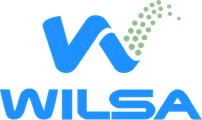History
WILSA® Fluid Conditioning TechnologiesFor more than 23 years, WILSA Holdings and its predecessors have developed innovative water treatment and fluid conditioning systems for a broad range of uses.
Beginning in 1995 and continuing through 2014, many of the concepts for the Company’s ElectroWave® technologies were conceived, developed, tested and proven in a broad range of applications.
From 1995-2000, bilge water reclamation systems were developed and installed along the Texas Gulf Coast. These on-shore facilities collected hydrocarbon contaminated water generated by commercial fishing vessels and processed it to levels allowing for the permitted discharge of oil-free water into adjacent harbors. The development of these systems paved the way for applying the Company’s portfolio of water conditioning technologies to oilfield exploration & production activities more than a decade later.
In 2000, a system was conceived and developed to remove fish oil and other contaminants from water utilized in Norwegian fish processing facilities that allowed the treated water to be discharged into the ocean.
In 2005, improved methods of dewatering refinery-generated waste streams were developed and implemented in Gulf coast refineries.
In 2013, field trials began with several exploration and production companies in Texas and Oklahoma to evaluate improved oil/water separation and enhanced suspended solids extraction at oilfield production facilities and saltwater disposal wells.
In 2014, leasing of oilfield equipment began in flowback and saltwater disposal well operations to accelerate oil/water separation and enhance water clarification.
In each instance, innovative technologies demonstrating environmentally friendly means of influencing phase separation and flow characteristics of fluids were developed, tested and proven in real-time applications. Prototypes utilized in proof-of-concept and lab testing were replaced with industrial grade apparatus, and ongoing research and development has yielded an array of robust production equipment that is now being commercialized in a broad range of applications in a variety of industrial sectors.
